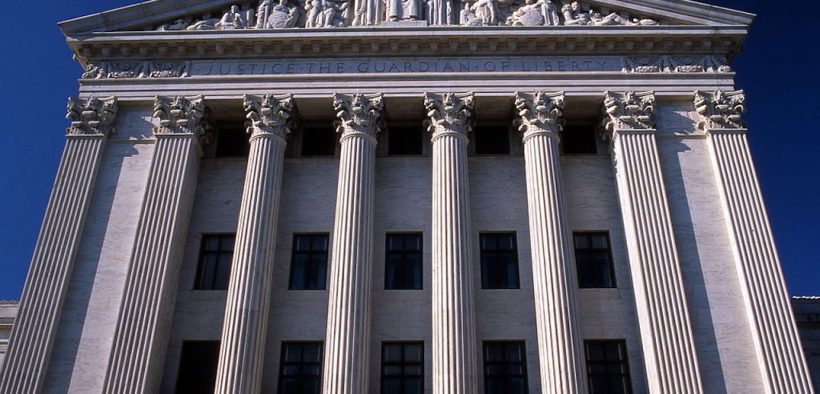Supreme Court Upholds Clean Water Act in Groundwater Case

“This decision is a huge victory for clean water. The Supreme Court has rejected the Trump administration’s effort to blow a big hole in the Clean Water Act’s protections for rivers, lakes, and oceans.”
In a victory for environmental groups, the Supreme Court issued a 6-3 ruling on Thursday pertaining to the Clean Water Act. In County of Maui v. Hawaii Wildlife Fund, the county argued that its wastewater treatment facility in Maui, Hawaii, was permitted to dump treated sewage into groundwater near the Pacific Ocean without a permit.
The Trump administration also filed a brief on behalf of the county, declaring that the Clean Water Act did not apply to pollutants that pass through groundwater, according to the New York Times. The Supreme Court disagreed, however, and ruled in favor of The Hawaii Wildlife Fund.
“We do not see how Congress could have intended to create such a large and obvious loophole in one of the key regulatory innovations of the Clean Water Act,” wrote Justice Stephen Breyer for the majority opinion.
Environmental groups were quick to hail the ruling a a victory.
“This decision is a huge victory for clean water,” said David L. Jenkin, attorney for Earthjustice, which represented the case. “The Supreme Court has rejected the Trump administration’s effort to blow a big hole in the Clean Water Act’s protections for rivers, lakes, and oceans.”
Wastewater facilities are required to obtain permits when dumping pollutants into navigable waters, but lawyers for the county argued no such permits are required if they dump directly into groundwater. The plant dumps four million gallons per day into groundwater a half-mile from the coast.
“This will make all the difference in stopping the practice of polluting our oceans, which our county has been doing for decades. We’ve been fighting this battle for more than a decade,” said Hannah Bernard of the Hawaii Wildlife Fund.
What is a ‘Functional Equivalent?’
Justices Samuel Alito, Neil Gorsuch, and Clarence Thomas dissented with Thomas authoring the opinion.
“Based on the statutory text and structure, I would hold that a permit is required only when a point source discharges pollutants directly into navigable waters,” he wrote.
The ruling overrules a decision by the Environmental Protection Agency to permit a loophole in the Clean Water Act. By dumping pollutants into soil or groundwater first, even if the pollutants reach protected water sources, the EPA held that treatment facilities were technically abiding by the law. After all, they were not dumping into the protected water directly.
“We hold that the statute requires a permit when there is a direct discharge from a point source into navigable waters or when there is the functional equivalent of a direct discharge,” Breyer wrote.
The Supreme Court sent the case back to a lower court. Previously, the county lost two lower court battles over the issue. Breyer instructed lower courts to use a new standard for deciding whether discharges would require federal licenses. Alito, however, questioned how that standard would be decided, CNN reported.
“Just what is the ‘functional equivalent’ of a direct discharge?” Alito asked. “Entities like water treatment authorities that need to know whether they must get a permit are left to guess how this nebulous standard will be applied.”
Breyer’s test for district courts primarily relies on two factors: distance pollution travels before entering protected waters and the amount of time it takes to reach them, Bloomberg Law reported.
More Work for Industries
Paul Beard, a Los Angeles industry lawyer, said the ruling was a “devastating decision” and other legal experts warned it will create more work for attorneys.
“Here’s a whole cottage industry of litigation going forward to interpret what functional equivalent means,” said Nathan Gardner-Andrews, general counsel for the National Association of Clean Water Agencies.
The EPA will also have more work to do to better define when a permit is required.
“There will be a clamor to get more meat on the bones to figure out what functional equivalent means,” said Larry Liebesman, lawyer at the water resources consulting firm Dawson & Associates.
During the Maui case, the EPA revised its policies to explicitly declare pollution that entered federal waters from a groundwater intermediary source does not need a Clean Water Act permit. The Supreme Court decision said the policy “would open a loophole allowing easy evasion of the statutory provision’s basic purposes.”















